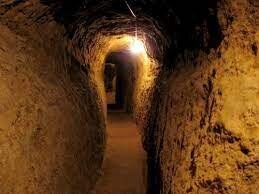INSUBCONTINENT EXCLUSIVE:
TEHRAN-- A regular roadway construction job just recently yielded an unexpected discovery when teams uncovered mystical subterranean tunnels
near Shahr-e Belqeys ( City of Belqeys ) in northeast Iran
Remains of ancient underground passages were found a few days earlier during a roadway building job in Bam town of Esfarayen county, a
professional with Belqeys archaeological site said on Monday.Shahr-e Belqeys was thriving during a duration from the late Sassanid era to
The total length of those corridors is 18 km, and there is a restroom and a mill on the way, which has actually not been opened yet, the
Last years, traces of this underground city had been discovered however to protect it, these remains were obstructed by the regional
cultural heritage directorate
Now we reached these ancient structures from another place, which confirms the statements of the regional individuals, the expert discussed
The ruins have actually yielded potteries approximated to belong to the Seljuk duration, IlKhanid, and even earlier periods
An extensive archaeological excavation is required to dive into its secrets
Archaeological excavations at neighboring installs and hilltops put the antiquity of Belqeys in some 6,000 years
Specialists believe that the ancient city taken pleasure in success from the late Sassanid to the early Islamic eras.Historical proof,
consisting of a book on the history of Neyshabur, suggests that Shahr-e Belqeys won unique attention from Sassanid emperors of the time,
which brought the land an unique fortune prior to the introduction of Islam.Evidence recommends that Shahr-e Belqeys was hectic from the
late Sassanid era to a time when Nader Shah Afshar (one of the most powerful rulers in Iranian history) presumed power in the early 18th
century.Belqeys castle is among the biggest mud-brick fortresses in Iran after the UNESCO-registered Bam castle
It lies at a brief distance from the city of Esfarayen
Residues of the castle, family lodgings, watering channels, a tank, and a hypostyle hall are among things up until now uncovered in Belqeys
throughout rounds of excavation.Iran is a haven for ancient troglodytic architecture which is somewhat forgotten, though they are filled
The northwest Kandovan town is one of the most well-known examples of troglodytic architecture in the nation; its ice-cream cone-shaped
homes are resembling that of Turkeys Cappadocia.In 2018, the country hosted the 3rd International Troglodytic Architecture Conference in
which 10s of professionals, scientists, and academia discussed troglodyte-associated architecture, culture, and technology.AM

